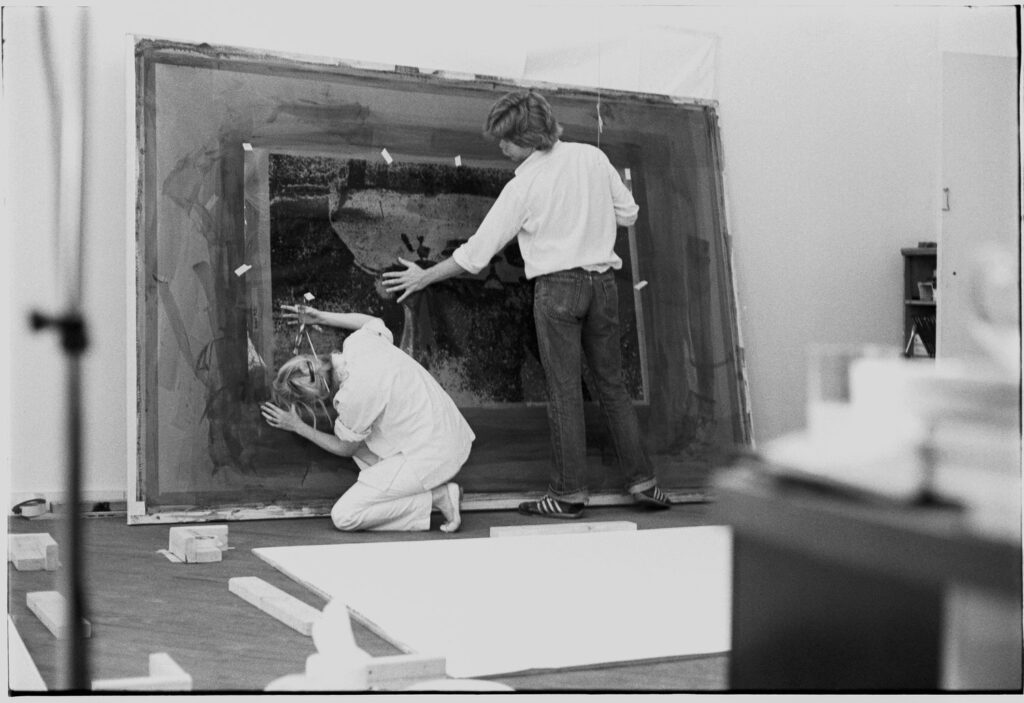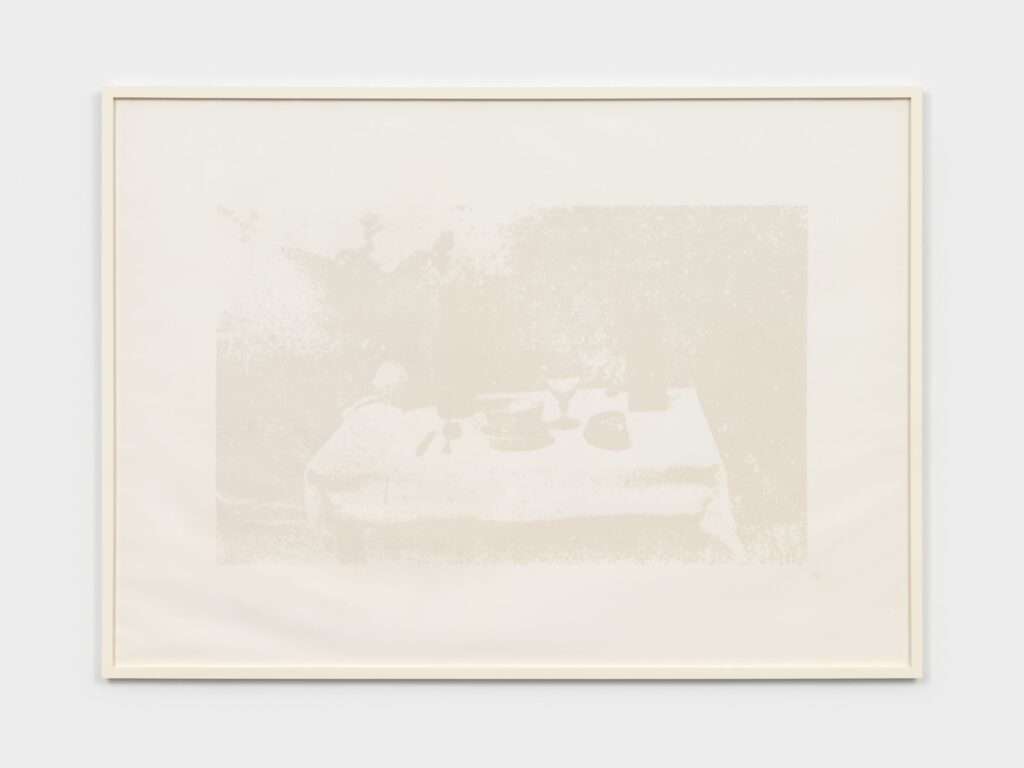
We used to be a real country, where artists made 6×9-ft unique screenprints of degraded prints of one of the world’s first photographs.
Tabula Rasa, the summer group show at Paula Cooper, takes its name from a series of four unique screenprints Sarah Charlesworth made in 1981, one of which is in the show. On the their pandemic-era blog, PCG Studio, the gallery has posted a series of photos showing the making of Tabula Rasa, as well as another rarely seen work in the show: Face/Surface, a 1976 collaboration between Charlesworth and her former teacher Joseph Kosuth.

The works are white-on-white uniquely altered enlargements of a lost, early glass plate print of a still life by Nicéphore Niépce, one of the inventors of photography. At the time Charlesworth was working with it, the image was dated to 1829, but it had earlier been dated to 1822-25. When le Figaro published it in 1972 on the 150th anniversary of photography, they called it the oldest photo in the world. This date range meant it was probably older than the oldest surviving Niépce photo, Point de vue de Gras, a view out of Niépce’s window.
In 1991, photo historian J.L. Marignier figured out the process by which the image, known as Le Table servie, was produced, and based on Niépce’s use of fixative, dated the print to 1832-33, a period in which he was collaborating with Daguerre, and just before his sudden death. Using the formulas and exposure processes gleaned from Niépce’s notes and correspondence, Marignier and M. Lorseau succeeded in reconstituting an approximation of La Table servie in 2004, which is on view at the Niépce House Museum.

A significant portion of Charlesworth’s short text on the invitation card—she previewed Tabula Rasa for a week in January 1982 at the Gagosian Gallery, a Los Angeles gallery focused on emerging artists, which had opened a 5th floor loft space on West Broadway in SoHo—a significant portion of the text was devoted to the purported destruction of the plate in a fit of madness by “a Professor Peignot,” which may give a clue to Charlesworth’s Niépce sources. [update two minutes later: nvm, it’s gotta be The History of Photography (1955), by Alison & Helmut Gernsheim, who rediscovered, hyped and gatekept the Niépce Gras print for decades.]
The particulars of the photo, the print, its creation, and its history, were of interest to Charlesworth, who used it to represent “the invention of photography.” In her April 1982 review of Roland Barthes’ Camera Lucida in Artforum, an influential magazine of the time, Charlesworth said Barthes was wrong to call La Table servie the first photograph. But still, she wrote, it was “one of my favorites.”
On three of the Tabula Rasa prints, Charlesworth added a lily in red, a possible reference, reviewer Charles Hagen wrote at the time, to an Annunciation, and the artist’s desire to return to a state of pre-photographic innocence—or at least to depict it. The fourth print, which I believe is the one exhibited here, has no such alteration, so perhaps no innocence can be implied.
The Making of “Tabula Rasa” and “Face/Surface” [pcg studio]
